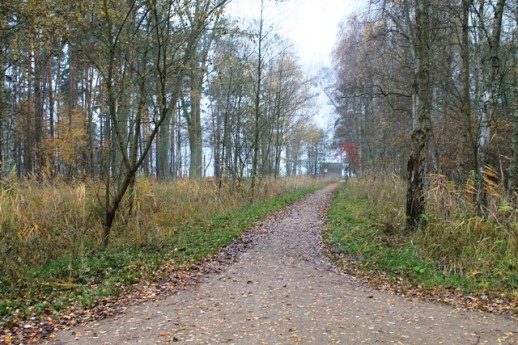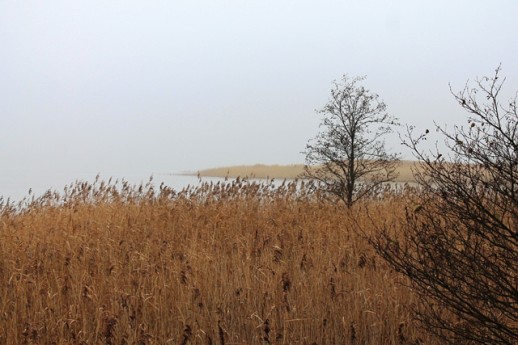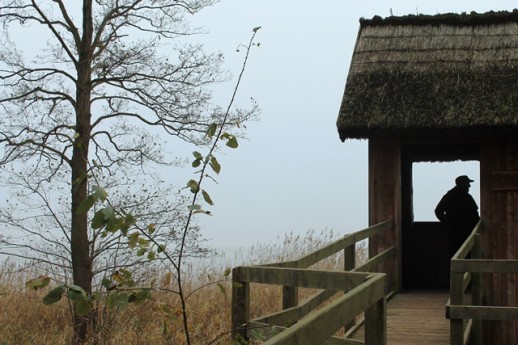By Paul Scraton (Pictures by Katrin Schönig)
The car rumbled along a road that was last paved during the years of the German Democratic Republic, built out of a series of concrete slabs laid in a line through the trees. At the start of the forest a sign warned us that this road – eight kilometres long – was a dead end trail that would allow us to drive as far as the boundaries of the National Park and no further. The park, a few hours north of Berlin and on the banks of the Müritz lake which gives it its name, was founded in 1990 in the months after the fall of the Berlin Wall, and is made up of a landscape typical for this part of the world; forests, swamps, lakes and meadows.
We were following directions to a National Park information centre in the village of Boek, right on the park boundary, but when we reached the collection of farmhouses surrounding an old manor house that now houses the park centre, we found everything shuttered and locked. No-one, it seemed, had any business exploring the forests and the banks of the Müritz on a foggy Sunday in November. As we pulled our collars up against the light drizzle that had begun to fall as we arrived, we could fully understand the assumption.
But still, we had arrived, there were a few hours of daylight left – such as it was – and if the fog seemed to be closing in, we figured that this was not exactly the frosty peaks of Snowdonia or the Cairngorms and we would be good for a stroll in the woods as long as we stuck to the path. And so we followed it out of the village towards the final buildings before the park starts. We passed by a well-and-truly out of season camp site and a couple of weekend cottages, before we reached a red brick house right on the edge of the forest. A large dog barked from behind a high fence. Smoke tumbled from the chimney. The garage walls were decorated with the antlers of many, many, successfully hunted stags. We quickened our step.
In the forest the fog was hanging above the trees, and there was no wind or seemingly any sound at all, now that the dog had calmed himself. As we got closer to the lake we began to hear geese on the water, beyond the trees. There was the occasional splash of a duck on the water and, what was that? Perhaps a motorboat, somewhere out on the lake and just within earshot? At the lookout point, with the trees behind us, we gazed out across the water to discover most of Germany’s largest lake lost to the fog. We peered through binoculars towards the geese, and try and work out if there was a fisherman sleeping in his boat out beyond the buoy marking the limits of the park. There seemed to be two rods, one resting on each side of the boat, but from within there was no movement. Perhaps the stillness of the moment lulled the fisherman to rest.
What had we come to see? What had we walked for? There are ospreys here, and white-tailed eagles. Deer and wild boar roam the forest. All kinds of bird- and wildlife call the Müritz National Park home, but on the edge of winter, with the fog all around us, there was little to be seen. And yet it did not matter. It was enough just to be there, in the stillness as the mid-afternoon dusk approached, knowing that we had most of the park all to ourselves. There was a beauty in the bare forest, the leaves sinking into the sodden ground, the fog swirling amongst the higher branches.
We walked back along the path to the village, where there were still no stirrings of life, and the car that was waiting patiently to take us through the encroaching darkness on the long drive home… but even then, as the lights of our fellow travellers on the autobahn passed us in the fast lane, it was sure that the Müritz would stay with us in our thoughts as we settled back to everyday life in the city.


